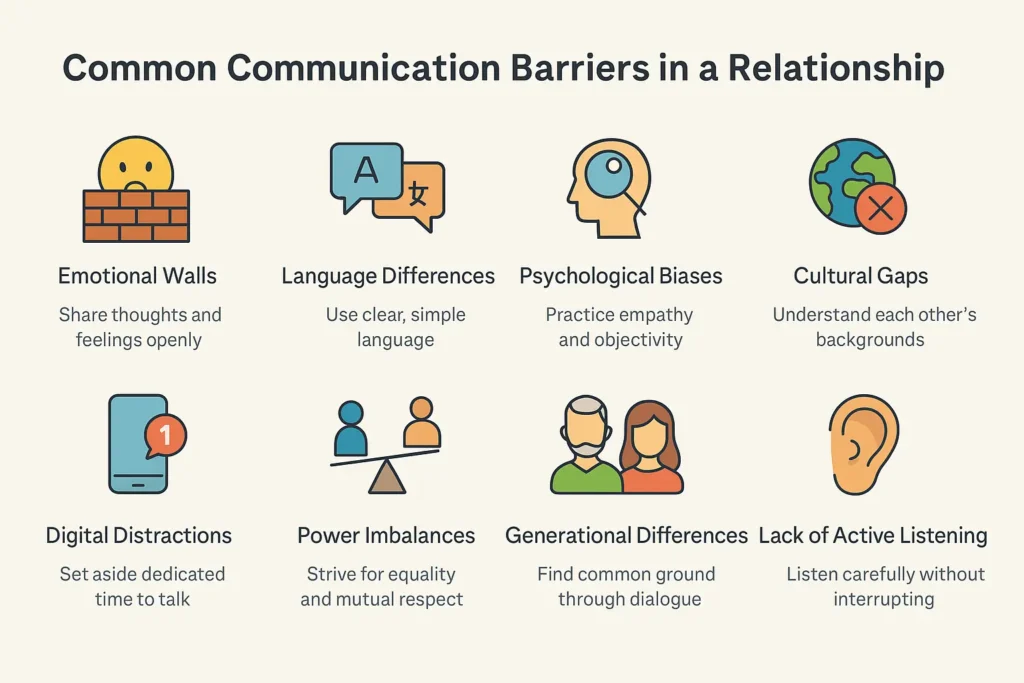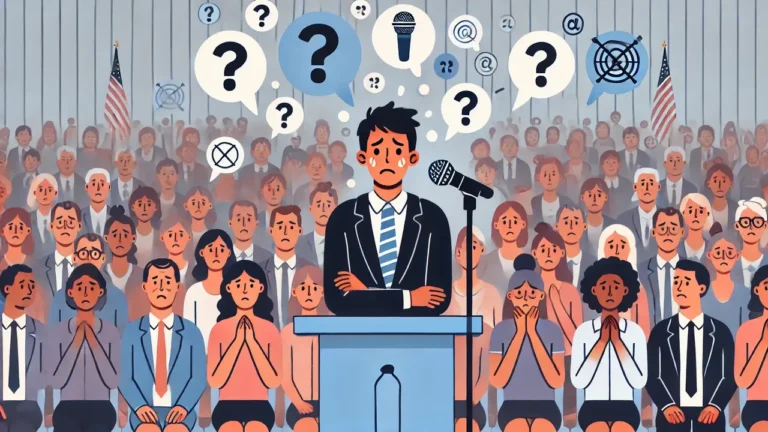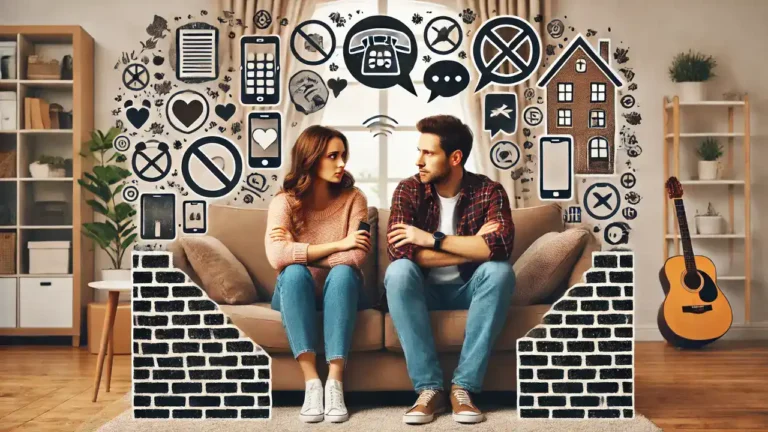Communication Barriers in Relationships
Have you ever felt completely misunderstood by someone you care about? Maybe you’ve argued over something small, only to realize later that it was never really about that issue at all. You’re not alone. Communication barriers in relationships are more common than you might think, and they can quietly chip away at trust, happiness, and even love. Whether you’re dealing with a spouse, partner, family member, or friend, figuring out how to truly connect is key to a strong relationship.
But what exactly makes it so hard to communicate, even with those we know best? Why do simple conversations sometimes spiral into conflict or confusion? This post unpacks the most common communication barriers in relationships, from language gaps and emotional walls to technology-driven misunderstandings. More importantly, it shows you how to break down these barriers and build lasting, healthy bonds.
Understanding Communication Barriers in Relationships
Communication barriers in relationships refer to any obstacle—big or small—that gets in the way of honest, clear, and meaningful exchanges. These obstacles can be obvious, like speaking different languages, or subtle, like making assumptions about each other’s feelings. Sometimes, even couples who love each other deeply get stuck in patterns of miscommunication.
In relationships, barriers can be emotional, psychological, cultural, or even digital. These walls not only block understanding but also stop us from expressing love, solving problems, or supporting each other through hard times. When left unaddressed, they lead to resentment, loneliness, and even the end of once-strong connections.
Common Causes of Communication Barriers
- Different communication styles (verbal, nonverbal, direct, or indirect)
- Past experiences and unresolved traumas
- Language or vocabulary differences
- Emotional baggage and trust issues
- The influence of technology and social media
Understanding these causes is the first step toward overcoming them and creating space for healthier, more honest conversations .
The Most Common Communication Barriers in Relationships

Emotional Barriers
Emotions play a powerful role in how we talk—and listen—to each other. If you or your partner are feeling anxious, angry, or defensive, it can be hard to hear what’s really being said. For example, if someone fears rejection or criticism, they might hold back or shut down entirely.
- Emotional Baggage: Past hurts or betrayals may make it hard to trust or open up.
- Fear of Vulnerability: Worrying about judgment or conflict leads to avoidance.
- Overreacting or Shutting Down: Heightened emotions make it tough to communicate calmly.
Building emotional intelligence—skills like self-awareness and empathy—can help you identify and talk through these barriers, instead of letting them build up over time.
Language Barriers: Speaking the Same Words, Hearing Different Things
Language is more than just the words we use. Accents, dialects, jargon, and even “love languages” can cause confusion. Maybe you say “I’m fine” when you’re really not, or your partner expresses care by doing things rather than saying them.
- Different Native Languages or Accents
- Misunderstood Tone or Sarcasm
- Unique Vocabulary or Inside Jokes
- Nonverbal Cues: Facial expressions and body language add extra layers of meaning, which can be misread.
Improving active listening and checking for understanding—like paraphrasing what you’ve heard—can bridge these language gaps.
Psychological Barriers: Biases, Assumptions, and Mental Filters
We all see the world through our own lens, shaped by past experiences, beliefs, and assumptions. Sometimes, you might assume you know what your partner is going to say—or what they mean—before they’ve even finished talking.
- Selective Perception: Focusing only on what you want to hear.
- Confirmation Bias: Only accepting information that matches your beliefs.
- Unresolved Trauma: Past experiences clouding present communication.
It helps to slow down, ask clarifying questions, and avoid jumping to conclusions when you notice these mental shortcuts at play .
Cultural and Generational Barriers
Cultural background shapes how we express feelings, handle conflict, and even interpret gestures. Generational differences can also affect how people relate to each other.
- Different Family Values or Customs
- Divergent Attitudes Toward Gender Roles
- Generational Gaps in Communication Style
Learning about each other’s backgrounds, being open to differences, and showing respect for unique perspectives can dissolve these invisible walls.
Technology and Digital Communication
Text messages, emails, and social media make it easy to stay in touch—but they can also create new barriers.
- Misreading Tone in Texts
- Overuse of Emojis or Abbreviations
- Distraction from Devices (“Phubbing”)
- Social Media Misunderstandings or Jealousy
Try setting aside “phone-free” times to connect face-to-face, or clarify digital messages to avoid misinterpretations .
Power Imbalances and Control
When one person dominates conversations or decision-making, communication becomes one-sided. Control issues or manipulative behaviors—like stonewalling, gaslighting, or interrupting—make healthy dialogue impossible.
- Not Allowing Equal Voice
- Interrupting or Dismissing
- Using Silence or Withholding Information as Control
Healthy relationships need equality and respect, with both partners feeling safe to express themselves.
The Impact of Communication Barriers on Relationships
Barriers to communication don’t just cause small misunderstandings—they can lead to big consequences in relationships. Here’s what can happen if these obstacles are not addressed:
- Increased Conflict: Small disagreements escalate quickly.
- Growing Distance: Emotional and physical intimacy declines.
- Lack of Trust: Partners start doubting each other’s intentions.
- Poor Problem-Solving: Issues remain unresolved, creating resentment.
- Breakdown of Support: Partners may feel alone, even together.
These effects make it even harder to connect, turning minor issues into long-term problems. Early recognition and intervention are key to stopping the cycle.
How to Overcome Communication Barriers in Relationships
Build Self-Awareness and Emotional Intelligence
Start by reflecting on your own communication habits. Notice when you feel triggered or defensive, and take a moment to pause. Practice self-regulation and recognize your partner’s feelings without judgment. Regularly check in with yourself: “Am I really listening, or just waiting to respond?”
Practice Active Listening
Active listening is more than just hearing words. It means giving your full attention, making eye contact, and responding to what’s actually being said.
- Paraphrase: Repeat back what you heard in your own words.
- Ask Open Questions: Instead of “Why did you do that?” try “Can you help me understand what you were thinking?”
- Show Understanding: Nod, use affirming phrases, and validate your partner’s feelings.
Active listening breaks down assumptions and helps both people feel heard.
Use Clear, Simple Language
Avoid jargon, sarcasm, or coded messages. If you’re upset, say so directly but kindly. If you need something, ask for it clearly. Practice expressing feelings with “I” statements (“I feel hurt when…” instead of “You always…”).
Set Aside Time for Meaningful Conversations
With busy schedules and digital distractions, quality time gets lost. Make space for regular, device-free conversations. Schedule “relationship check-ins” or “family meetings” to discuss concerns before they grow.
Address Technology Use Mindfully
Set boundaries for digital device use. Agree on “no phones at the table” or schedule “screen-free” evenings. Discuss how you’ll handle social media, online friendships, and digital privacy.
Learn About Each Other’s Backgrounds
Spend time learning about each other’s cultures, family history, and communication preferences. Discuss how your backgrounds shape your approach to conflict, affection, or routines. Embrace these differences as strengths rather than obstacles.
Seek Feedback and Clarification
If you’re unsure what your partner means, ask for clarification. Feedback loops (“Did I understand you correctly?”) reduce misinterpretation. Encourage honest, nonjudgmental feedback about your own communication, too.
Address Power Imbalances
Make sure both people have equal space to speak and share ideas. If one person tends to dominate, set ground rules—like each taking turns or using a talking stick. Be aware of control tactics, and consider couples counseling if these issues persist.
The Role of Professional Help
Sometimes, breaking communication barriers means getting outside support. Couples counselors, relationship coaches, and therapists are trained to help partners:
- Identify and address hidden patterns
- Improve emotional intelligence
- Build conflict resolution skills
- Heal past traumas affecting current communication
Seeking professional help is a sign of strength—not weakness—and can be a turning point for struggling relationships.
Conclusion
No relationship is perfect, but every relationship can improve its communication. Whether it’s emotional walls, language gaps, or just everyday misunderstandings, knowing the main barriers to communication is half the battle. Building self-awareness, practicing active listening, and being willing to learn from each other can turn small cracks into solid foundations.
Remember, breaking communication barriers takes patience and practice, but the rewards—trust, intimacy, and true connection—are worth every effort. If you need more tips or want to connect with others on this journey, feel free to leave a comment or explore our resources on Barriers of Communication for deeper insights.





